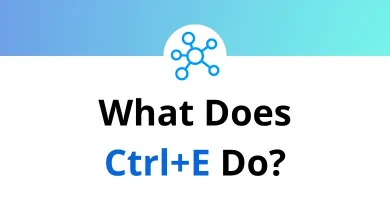What is WordPad? What is it used for?
WordPad is a basic word-processing application that comes pre-installed with Microsoft Windows. First introduced in Windows 95, WordPad sits between Notepad (a plain-text editor) and Microsoft Word (a full-featured word processor). It is lightweight, free to use, and designed for users who need simple document creation without the advanced tools found in professional software.
Table of Contents
While WordPad does not offer the extensive features of Microsoft Word, it still provides enough functionality for everyday writing tasks. This makes it a go-to tool for quick note-taking, drafting letters, and editing formatted documents.
Features of WordPad
WordPad may appear simple, but it offers several handy features for basic word processing. Here are some of the key ones:
1. Rich Text Formatting
Unlike Notepad, WordPad supports Rich Text Format (RTF). This means users can change fonts, adjust text size, apply bold, italic, or underline styles, and highlight sections. You can also insert bullet points and align text for better readability.
2. File Compatibility
WordPad can open and save files in multiple formats, including .RTF, .DOCX, .ODT, and .TXT. This makes it versatile for editing or sharing documents across different platforms without needing heavy software like Microsoft Word.
3. Insert Images and Objects
One of WordPad’s strengths is its ability to insert pictures, drawings, and objects into documents. Users can add images from their computer or embed objects like charts and shapes for enhanced presentation.
4. Paragraph and Page Setup Tools
WordPad allows users to customize paragraphs with alignment, line spacing, and indentation options. The page setup feature also lets you adjust margins, paper size, and orientation before printing a document.
5. Spell Check and Basic Editing
Although WordPad does not have advanced grammar checking, it provides basic spell-check suggestions in some versions of Windows. Standard editing tools like cut, copy, paste, undo, and redo are also available.
6. Printing Options
WordPad integrates with Windows printing functions, making it easy to print documents directly. Users can preview documents before printing and adjust settings like orientation and margins.
7. Lightweight and Free
One of WordPad’s greatest advantages is that it is lightweight and consumes minimal system resources. Since it comes bundled with Windows, it is completely free to use.
Related:
What is WordPad Used For?
WordPad is widely used for simple document creation and editing tasks. Here are the most common uses:
1. Basic Document Writing
WordPad is ideal for writing letters, resumes, essays, or short reports. It provides enough formatting tools to make documents neat and professional without overwhelming the user.
2. Note-Taking
Students, professionals, and casual users often use WordPad for quick note-taking. Its simple interface makes it faster than launching heavier applications.
3. Editing Rich Text Files
Because WordPad supports RTF and DOCX formats, it’s useful for opening, viewing, and making small edits to formatted documents when Microsoft Word is not installed.
4. Creating Printable Documents
Users can prepare documents with headers, bullet lists, and images, then print them directly from WordPad for school or office purposes.
5. Drafting Before Final Editing
Writers and professionals sometimes use WordPad for drafting content before moving to advanced editors like Microsoft Word or Google Docs. This helps focus on writing without distractions from complex tools.
6. Offline Writing
Since WordPad does not rely on the internet, it serves as a reliable tool for offline writing and editing, which is particularly helpful when traveling or facing connectivity issues.
Conclusion
WordPad is a simple yet effective word-processing tool built into every version of Microsoft Windows. While it lacks the advanced features of professional applications like Microsoft Word, it offers all the essentials text formatting, file compatibility, image insertion, and printing tools for everyday use. Whether you need to draft a quick letter, take notes, or create a basic report, WordPad provides a lightweight and user-friendly solution.
In short, WordPad bridges the gap between plain text editors like Notepad and full-featured processors like Microsoft Word, making it a valuable tool for users who need basic word processing without extra cost or complexity.





